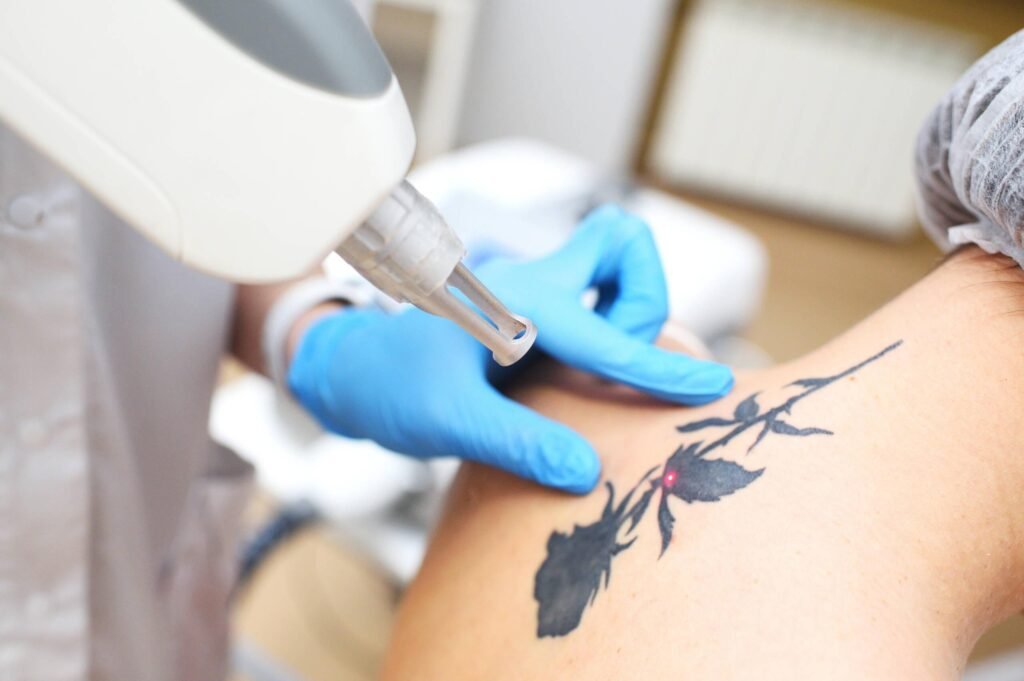Laser tattoo removal is a non-invasive technique that utilizes laser technology to break down tattoo ink particles embedded in the skin. It is widely regarded as one of the most efficient ways to erase unwanted tattoos without the need for surgical intervention. Laser Tattoo Removal in Dubai is increasingly sought after due to its precision and ability to target ink without damaging surrounding tissues.
Points:
-
Non-invasive procedure using laser pulses.
-
Targets pigment while sparing the surrounding skin.
-
Popular for its effectiveness and safety.
The Science Behind Tattoo Ink and Skin Interaction
Tattoo ink is injected into the dermis, the second layer of the skin, where it remains trapped by a mesh of collagen fibers. The particles are too large for the immune system to remove, which is why tattoos are considered permanent. The ink colors used vary, with different pigments responding differently to laser light based on their absorption spectrum.
Points:
-
Ink is placed in the dermis, not the epidermis.
-
Particle size prevents natural removal.
-
The color and composition of the ink affect laser response.
How Lasers Break Down Tattoo Pigment
The laser produces pulses of concentrated light energy that are absorbed specifically by the tattoo ink. The heat from the laser shatters the pigment into smaller fragments. These tiny pieces are then gradually removed by the body’s natural lymphatic system. The wavelength of the laser used is matched to the specific color of the ink for maximum absorption.
Points:
-
Lasers emit targeted energy bursts.
-
Ink is shattered into tiny particles.
-
Natural immune processes carry particles away.
Role of Different Laser Types in Tattoo Removal
Different types of lasers are used depending on the color and depth of the tattoo ink. Q-switched lasers are the most commonly employed due to their ability to deliver high energy in short pulses. For multicolored tattoos, multiple laser types may be combined to address each pigment effectively.
Laser Types and Target Ink Colors
| Laser Type | Wavelength (nm) | Target Ink Colors |
|---|---|---|
| Q-switched Nd:YAG | 1064 | Black, dark blue |
| Q-switched Nd:YAG | 532 | Red, orange, light brown |
| Alexandrite Laser | 755 | Green, blue |
| Ruby Laser | 694 | Blue, green |
Points:
-
Q-switched lasers are standard for tattoo removal.
-
Specific lasers match specific ink colors.
-
Multicolor tattoos may require multiple sessions.
What Happens After the Laser Targets the Ink?
Once the ink is shattered by the laser, the body’s lymphatic system takes over. White blood cells absorb the tiny ink particles and transport them to the liver for processing. Over time, the tattoo fades as more pigment is cleared from the skin.
Key Points:
-
The immune system clears broken ink particles.
-
White blood cells absorb and transport ink.
-
Gradual fading occurs with repeated treatments.
How Ink Color Affects Laser Response
Not all ink colors are equal when it comes to laser absorption. Black ink absorbs all laser wavelengths and is easiest to remove. Colors like green, yellow, and light blue are more resistant due to their light-reflecting properties, requiring specialized lasers.
Points:
-
Black ink is easiest to remove.
-
Bright colors need specific laser types.
-
Resistance varies by pigment formulation.
Skin Response to Laser Treatment
The skin may appear red and slightly swollen after each session, indicating that the laser has penetrated effectively. This reaction is temporary and signals the body’s initiation of the healing and ink-clearing process. Proper aftercare helps in optimal ink clearance.
Points:
-
Temporary redness and swelling are normal.
-
Healing is part of ink removal.
-
Proper skincare aids in faster recovery.
Importance of Skin Type and Tattoo Depth
Darker skin tones absorb more light, so lower laser settings are used to prevent hyperpigmentation. Likewise, tattoos that are deeply embedded take longer to break down. Knowing your skin type helps customize the laser treatment for safer outcomes.
Table: Skin Type vs. Laser Strategy
| Skin Type (Fitzpatrick) | Laser Energy Strategy |
|---|---|
| Type I–III | Higher energy tolerated |
| Type IV–VI | Lower energy, more sessions |
Points:
-
Skin tone influences laser settings.
-
Deep tattoos need longer duration treatment.
-
Customization ensures effectiveness and safety.
Advancements in Tattoo Removal Technologies
New laser technologies, such as picosecond lasers, have revolutionized tattoo removal. These deliver shorter pulse durations with higher energy, breaking down ink more efficiently. They work especially well on stubborn colors and older tattoos.
Points:
-
Picosecond lasers offer faster ink breakdown.
-
Effective for resistant ink colors.
-
Advanced tech improves overall results.
FAQ’s:
1. How does laser tattoo removal target the ink without damaging the skin?
Laser energy is absorbed primarily by the ink particles, not the surrounding skin, due to selective photothermolysis. The targeted nature of the treatment helps avoid skin damage.
2. Can all tattoo colors be removed with laser treatment?
Most colors can be removed, although certain hues like green, yellow, and light blue require specialized lasers and more sessions.
3. Is laser tattoo removal painful?
While some discomfort may be felt, it’s often compared to a rubber band snapping on the skin. Numbing techniques may be used to improve comfort.
4. How long does each laser session last?
Sessions are typically short, ranging from 15 to 45 minutes, depending on the tattoo’s size and complexity.
5. What should I avoid after a laser tattoo removal session?
Avoid direct sun exposure, hot baths, and tight clothing around the treated area. Keeping the area clean and moisturized is essential.
Conclusion:
Laser tattoo removal is a highly precise and effective method of eliminating unwanted tattoos by targeting the pigment deep within the skin. Through carefully calibrated laser pulses and natural immune processes, tattoos fade gradually and safely. Technological advancements now allow better outcomes even for multicolored and older tattoos.












































